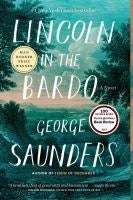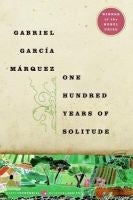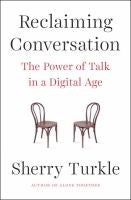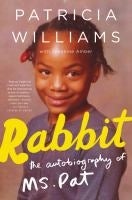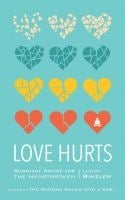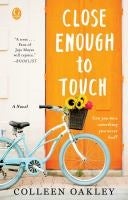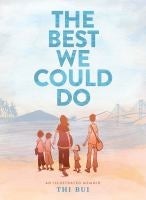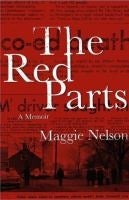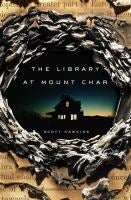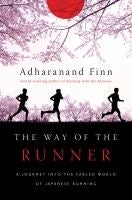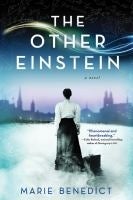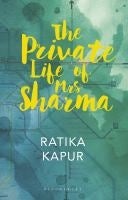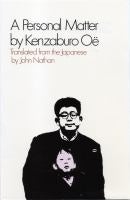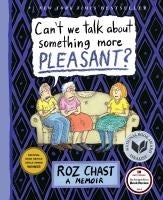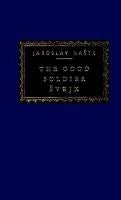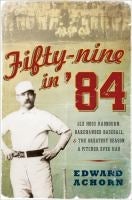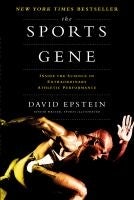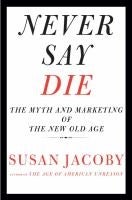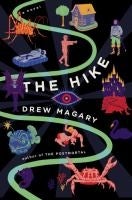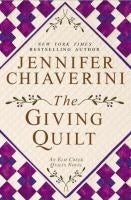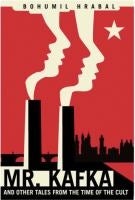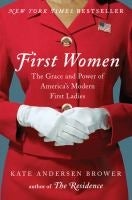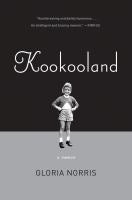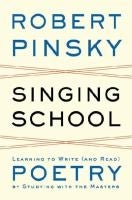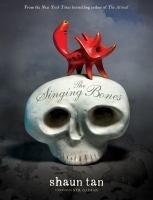SDPL Recommended Books
Staff Picks 2017
Library Clerk, San Carlos Branch Library
San Diego Union-Tribune, Dec. 24, 2017
Winner of the 2017 Man Booker Prize for Fiction, George Saunders’s “Lincoln in the Bardo” is a stylistically daring novel that follows the ghosts who inhabit the cemetery where Abraham Lincoln’s son, Willie, lies recently interred. Taking place over the span of one night in 1862, the narrative alternates excerpts from historical accounts with the first-person stories of the deceased. A newlywed printer, a verbose student, and a contrite reverend anchor the novel, serving as the reader’s guides through the bardo, a Tibetan term for the liminal space between life and death. The innovative “Lincoln in the Bardo” is a moving and thought-provoking read and an excellent choice for a cool and cloudy night.
Library Technician, San Diego Central Library
San Diego Union-Tribune, Dec. 10, 2017
On the surface, “One Hundred Years of Solitude” is the saga of the Buendía family in Macondo, a city dreamed of and founded by patriarch José Arcadio Buendía. García Márquez seamlessly blends the everyday life of Macondo’s inhabitants with fantastical elements, creating a metaphorical story of the history of Colombia and Latin America. The themes of family, repetition of history and isolation are explored with a dizzying cast of seven generations of the Buendía family and the townsfolk that populate the city of mirrors. As the misfortunes of the Buendía family grow and compound, their story ends with the fulfillment of a family curse, long foretold by Buendía matriarch Úrsula Iguarán.
Library Assistant, Carmel Valley Branch Library
San Diego Union-Tribune, Nov. 12, 2017
This is an intriguing book about conversation coexisting in the technological world. Turkle cites an increase among adults and children in avoiding conversation due to technology usage. She discusses how conversation provides a dialogue that is different from using electronic communication. Her studies have shown that adults and children cannot disconnect from these devices in the presence of others for conversation to occur. The author found that when people are always constantly checking their phone or responding to messages this causes a disservice to society. Face-to-face conservation allows one to enjoy dialogue happening at that moment. The human connection of conversation should not be forgotten with technology usage; rather we should balance the two while enjoying the benefits of using each one. The author provides valuable insight in what we miss out when not taking time to enjoy conversation.
Library Clerk, Point Loma Library
San Diego Union-Tribune, Oct. 29, 2017
Equal parts heartbreaking and hilarious, the true story of comedian Patricia Williams’ journey from growing up desperately poor in Atlanta to living a ‘normal’ life in Indiana is incredibly relatable. Ms. Pat uses often silly and flippant humor to describe her fractured childhood, in turn pulling the reader into a world where chaos and sadness may be laughed at. From living with her loving, bootlegger grandfather to her free-firing, pistol-wielding mother, Williams demonstrates humorous anecdotes to deflect her early childhood pain. The author also details the circumstances that thrust her adulthood while barely a teen, abusive relationships and doing whatever she has to do to survive and eventually leave Atlanta’s worst parts in the ‘80s and ‘90s. A must-read memoir for fans of comedy and using humor to heal all wounds.
Library Clerk, Mission Hills Library
San Diego Union-Tribune, Oct. 15, 2017
“Love Hurts: Buddhist Advice for the Heartbroken” by Lodro Rinzler is a helpful read for anyone currently experiencing loss, heartache or simply interested in the human experience of living and loving. A Buddhist meditation on the reality of suffering, the author chronicles firsthand accounts of heartache both ordinary and extraordinary. He inspires us to remember that our hearts will be broken, maybe a million times or more in this lifetime. Yet, we can learn to accept heartbreak as a natural experience that occurs when we are truly engaged with life. The fearless are truly the most vulnerable. Can we open our hearts to and through the pain? Check Rinzler out for enlightening insights for the modern day experience.
Library Aide, University Heights Branch Library
San Diego Union-Tribune, October 1, 2017
This novel delves into a world in which a woman has grown up as a recluse due to her skin condition. Jubilee was diagnosed with being allergic to human skin cells at an early age and was on the brink of death after a high school dare. Following her mother’s death, she's faced with breaking her boundaries and going out to find a job in order to keep her home. Through an old acquaintance, Jubilee lands a job at her local library, where she meets characters that will test her limits. She finds herself craving something she has never had: to be touched. Exploring the life of someone who is going through such a traumatic experience is eye opening. Through imagination, this book provides a perspective on allergies and other diseases that is revealing, as well on the hard work in research that can save someone's life.
Librarian, Sciences Section, Central Library
San Diego Union-Tribune, September 17, 2017
In The Best We Could Do author Thi Bui translates her family’s oral history and their escape from Vietnam in 1978 into an extraordinary debut graphic novel. Má (mother) is a privileged girl who dreams of being a doctor and living life on her own terms. Bố (father), on the other hand, is a James Dean-wannabe on a scholarship, who survived land reforms that resulted in mass executions. Her parents meet and against all odds, survive and raise a family in war. Alternating between the past and present, an older Bui raises her own family and struggles with the meaning of parental sacrifices and residual childhood resentment. Bui’s simple black ink drawings and watercolors express the complex pain, trauma, and love linked across the generations. The Best We Could Do is bold, putting language to the words that can’t be said between immigrant parents and their children.
Librarian II, Kensington-Normal Heights Branch Library
San Diego Union-Tribune, September 3, 2017
The Red Parts by Maggie Nelson is a book of mixed genres. Part memoir, part true crime and in the end a very well written and deeply personal story. In March 1969, Jane Mixer, 23, planned to return home to announce that she was getting married. A law student at the University of Michigan in Ann Arbor, she had arranged for a ride through the campus bulletin board. She never arrived home. Her body was found inside the gates of a cemetery only 14 miles from school. She had been shot twice in the head and had been strangled. The author writes about the aunt she never met. The book recounts the series of events that lead to the reopening of the murder case. A haunting story told by a master storyteller.
Librarian, North Park Branch Library
San Diego Union-Tribune, August 20, 2017
A dark fantasy set against the backdrop of modern America. The Library at Mount Char reminds us, in a fascinating new way, that knowledge is power and power can be dangerous. Carolyn and the other orphans were taken in and raised under the watchful eye of Father, a shadowy and menacing figure who’s been alive longer than anyone can imagine. Father has amassed an enormous library, filled with mysterious tomes and lost information. He’s now passed some of the library’s wealth on to his “children,” teaching them from its vast contents skills not entirely of this world. Once Father’s gone missing, though, it is up to Carolyn to restore order among the clan of his dangerous students...before they tear each other and the world apart. This story straddles the line between reality and fantasy; it defies categorization and keeps you in suspense. An enjoyable, if a tiny bit frightening, read.
The Way of the Runner - Adharanand Finn
Branch Manager, Scripps Miramar Ranch Library
San Diego Union-Tribune, August 6, 2017
This work of non-fiction comes from the author of Running with the Kenyans and, in the tradition of the bestseller Born to Run, brings to life a vivid international examination of sports, passion and culture in the world of Japanese running. Combining storytelling and research, Finn writes in an immersive style weaving together human stories, interviews, science and humor. The running tradition of Japan resists easy explanation and is not very accepting of outsiders participating or making observations, leaving Finn a major challenge as a writer to explicate his subject—the result is a respectful (and physical) journey into learning more about the world, a beautiful country, one’s self and of course, running!
Branch Manager, University Community Branch Library
San Diego Union-Tribune, July 23, 2017
In her novel, Benedict explores the role of Albert Einstein’s first wife, Mileva “Mitza” Maric, as a woman and a gifted scientist. From her earliest days, Mitza’s path in life is steered by her father toward strictly academic pursuits. When she enrolls at the university, she is ready to fulfill her intellectual potential. However, her world expands in unexpected ways as she meets new friends and engages with fellow students, including a young Einstein. She is intrigued by Albert’s charming behavior and realizes that despite her physical limitations, she is not confined solely to a life of academics. Mitza and Albert grow closer while their mutual academic pursuits bring them great acclaim. As their personal and professional relationships intertwine, she soon realizes that her academic accomplishments are overshadowed by Albert’s as she is trapped in more traditional roles and by the expectations of those with whom she is closest.
Branch Manager, Carmel Valley Branch Library
San Diego Union-Tribune, July 9, 2017
Mrs. Renuka Sharma is a 37 year old wife and mother of a 15 year old boy. One day on her way to work in Delhi, she meets Mr. Vineet who is 30 and single. The two strike up a seemingly innocent friendship, except that Mrs. Sharma never quite manages to reveal that she is married. Her husband has been working in Dubai for a year and a half in order to save enough for them to buy an apartment. She is lonely and prone to self-justification which may prove a slippery slope as her relationship with Mr. Vineet intensifies. A rich portrait of modern-day India and the evolving middle class, caught between tradition and all the glistening possibilities.
Librarian II, Humanities Section, Central Library
San Diego Union-Tribune, June 25, 2017
A Personal Matter is, indeed, a very personal book. The plot revolves entirely around the emotional and psychological struggles of Bird, a man in his mid-20s who is struggling to balance his goals of travel and the responsibilities of family. This struggles is given even greater heft when he discovers his son has been born with brain damage. Bird battles self-destructive behavior and his own inner thoughts as he tries to come to grips with this development. The book is brutally honest, and at times Bird’s callousness is bracing, but it is a testament to Oe’s style that he keeps the book moving at a brisk and engaging pace while making you feel the dimensions of Bird’s struggle.
Librarian II, Humanities Section, Central Library
San Diego Union-Tribune, June 11, 2017
Chast’s graphic memoir allows her to deal with the issue of aging parents with both humor and sadness. The book starts with an overview of Chast’s early life and her relationship with her parents, but the bulk of the story deals with her parents in their later years. As their health begins to fail and independent living becomes more of a struggle, Chast must learn both how to care for them and how these changing family dynamics will affect her relationships. The cartoon artwork allows for moments of much-needed levity to be injected into the story, although the pictures can also pack an emotional wallop – the portrait of Chast’s father welcoming his wife home from the hospital is one such panel. Can’t We Talk About Something More Pleasant is a quick read, but one that will leave the reader thinking about important issues.
Librarian II, Humanities Section, Central Library
San Diego Union-Tribune, May 28, 2017
The Good Soldier Svejk is an epic of the First World War – of a kind. This is not a book of military victories and heroism in battle, but rather a rambling, comic look at the absurdity of a war that few understood the causes of. At the outbreak of the war, Svejk volunteers for the Austro-Hungarian army, though his own enthusiasm causes him some difficulties in acclimating to military life. The plot of the book follows Svejk and his regiment through their military preparations, although more time is spent on side stories, anecdotes and misadventures than actual training. The book is often laugh-out-loud funny, although you may have trouble deciding whether Svejk is the dumbest character in the book or the smartest.
Librarian II, Humanities Section, Central Library
San Diego Union-Tribune, May 14, 2017
Baseball is considered a traditional game, but it has changed tremendously since its early days. The formative years of major league baseball are often overlooked today, but featured some fascinating characters. Edward Achorn takes a close look at one of them, Charles “Old Hoss” Radbourn, possessor of not just a colorful nickname but also an eye-popping record: 59 wins in the 1884 season. Achorn recounts that season’s pennant races, Radbourn’s efforts in it and the possible reasons behind it. A journalist from Rhode Island, Achorn gives the reader context for the colorful characters and rough-hewn world of baseball in that era. Anyone interested in baseball history or that era in general will be interested in this book.
Librarian II, Humanities Section, Central Library
San Diego Union-Tribune, April 30, 2017
David Epstein, a journalist and former college athlete, takes a clear-eyed look at the science behind greatness in sports. This book examines how genetics affect athletic performance in sports ranging from track and field to volleyball to dogsledding covering topics including eyesight, endurance and work ethic. He uncovers some surprising genetic traits – and finds some that seem obvious but turn out to be more complicated. Epstein takes the science seriously and doesn’t shy away from complicated areas, but has the gift to explain them clearly. The book is engaging and the topics flow well from one to another, keeping the book moving at a nice pace and allowing readers to make sense of the big picture. Like good science, the book provides as many questions as answers, but is a fascinating look at the science of athletics.
Library Aide, Central Library, San Diego Public Library
San Diego Union Tribune, April 16, 2017
Most humans are extremely interested in how long they will live and what quality of life will be like in their elder years. For Boomers, what is being old really like these days? “Never Say Die” offers up a reality check on important perspectives on aging. Amidst a culture of heavy marketing towards ideals such as longevity, anti-aging, and the comfort of leisure in our final twenty years, “Never Say Die” examines half-truths such as the miracles of modern medicine, the ‘wisdom’ of old age, the industrial complex we call Medicare, and making our money last. The book also discusses the single-sex, female culture of old age. Then of course there is dementia! Ouch! Depressing? Rather, “Never Say Die” encourages us to face this time of life with eyes wide open.
Manager, Art, Music, and Recreation Section, Central Library
San Diego Union Tribune, April 2, 2017
From a witty and somewhat irreverent protagonist’s view we see what was meant to be a weekend business trip to a remote hotel detour to a twisted parallel dimension. Magary wastes no time to put the hooks in his reader. On an innocent afternoon walk in the woods surrounding his hotel, Ben finds himself thrown into a world with homicidal dog-faced humans, demons, man-eating giants, a talking crab and much more. Relying on his wits, magical resources, and a host of unlikely alliances, he must make this uncertain journey of discovery in order to make it back to his real world where hopefully his wife and children are still waiting for him. In this endeavor, Ben examines his own life and realizes what and who is important to him. Maybe we call this a “literary fantasy”? Whatever the case, it is a thoroughly funny and emotional thrill ride.
Librarian II, Central Library, San Diego Public Library
San Diego Union Tribune, March 19, 2017
The Elm Creek Quilts series by Jennifer Chiaverini provides engaging reading in print or audiobook format. By chance, I began with “The Giving Quilt” and followed with “The Union Quilters” to satisfy my history-buff interests. “The Giving Quilt” is especially endearing as it follows the stories of students at the fictional Elm Creek Manor Quilt Camp in rural Pennsylvania during the Thanksgiving holiday season for the “Quiltsgiving” winter session. Ultimately the student’s quilts are donated to the actual Project Linus organization for children in need. “The Union Quilters” is a historical fiction that follows several families during Civil War era Water’s Ford, PA, home of Elm Creek Manor. The reader is drawn in as tragic and heartwarming stories unfold thus laying the groundwork for future generations of Elm Creek quilters. One can enjoy the books in any order in this series while developing a fondness for the many charming characters.
Librarian II, Central Library, San Diego Public Library
San Diego Union Tribune, March 5, 2017
This book presents short stories from the early career of Hrabal, a master prose stylist. The stories depict daily life for people in newly Communist Czechoslovakia. The tales include stories of the workdays and off nights at a large steelworks; the evolving internal life of a ticket-taker; construction workers creating or destroying statues; and the efforts of a beleaguered artist, among other quirky characters. The stories range in tone from absurd to prosaic to beautifully melancholic, sometimes within the same story. What holds the collection together is Hrabal’s gift for finding the surreal in the reality of everyday life. The characters in these stories are all struggling, in different ways, to come to grips with their new reality and trying to define what meaning their lives hold. Hrabal, and translator Paul Wilson, renders this through almost musical prose, particularly in the final story, “Beautiful Poldi.”
Library Assistant, Carmel Valley Branch, San Diego Public Library
San Diego Union Tribune, February 19, 2017
This fascinating book explains how each of these modern First Ladies, from Jacqueline Kennedy to Michele Obama, approached this unique role. The author interviewed the inner circles of staff and friends to make comparisons to each predecessor and to reveal the admiration, friendships, or disdain that developed among the First Ladies. It is not all glitz and glamour. Public and media scrutiny leave few opportunities for privacy. The family quarters of the White House give the most privacy, but even there the Secret Service and numerous staff are a constant reminder that it is not only the First Family's home but also a public museum and a favorite tourist attraction. It will be interesting to see what the future will bring in how the definition of the President's spouse will not be confined to gender. The term First Ladies needs redefining as the role continues to evolve.
Librarian II, Central Library, San Diego Public Library
San Diego Union Tribune, February 5, 2017
Often biographies of dysfunction in families are viewed from the outside, from a retrospective view or as a survival story. You know what you are dealing with going in. In “KooKooLand”, the full extent of dysfunction crossing into real danger unfolds as the author, Gloria Norris, matures. When she is five years old, Gloria’s father is the center of the world – letting her be his sidekick for his questionable business dealings while always showing himself as the fastest, smartest, and strongest. She absorbs his lingo and his worldview. As time goes on, however, Gloria comes to the realization that what she knows as “normal” life is actually the opposite. A riveting description of a man that in the past might have been described as macho, charming, or powerful, but would be characterized quite differently today.
Librarian II, Kensington-Normal Heights Branch
San Diego Union Tribune, January 22, 2017
If you are like me, you like some poetry but are not exactly sure why. Should we just try to glean the meaning of words we don’t recognize in a poem through context or look them up? “Singing School: Learning to Write (and Read) Poetry by Studying with the Masters” by U.S. Poet Laureate Robert Pinsky is a readable classroom with bite-size pieces of information. The book is broken up into 4 section headings: 1. Freedom - poetry without rules. 2. Listening - is there music in the word structure? 3. Form - how is the poem arranged? 4. Dreaming Things Up – what is in this poem that you cannot explain and yet respond to. Pinsky brings a wide selection of poets to present. Pick a poet and read in any order that suits your mood, while your path is guided by the Poet Laureate who wants the reader to relax and enjoy.
Librarian II, Central Library, San Diego Public Library
San Diego Union Tribune, January 8, 2017
This remarkable book uniquely illustrates the Grimms’ tales with sculptures created by an artist and illustrator who excels at visual storytelling. Photographs of Shaun Tan’s artworks are paired on facing pages with extracts of Grimms’ tales written by folklore expert Jack Zipes. Tan believes that “what matters above all else are the hard bones of the story” and each of his small sculptures capture the essence of a familiar tale. The three-dimensional figures bring new life to the stories with a stark simplicity of form and sparing use of color. Tan acknowledges his inspiration from Inuit stone carvings and Neil Gaiman’s foreword notes the similarity: “They feel primal, as if they were made in a long-ago age of the world, when the stories were first being shaped.” The book can be enjoyed on its own for the extraordinary artwork, but also for the enduring appeal of the stories themselves.


